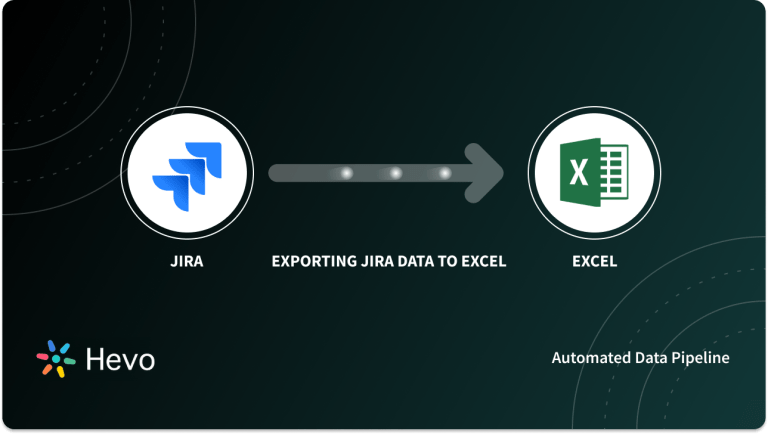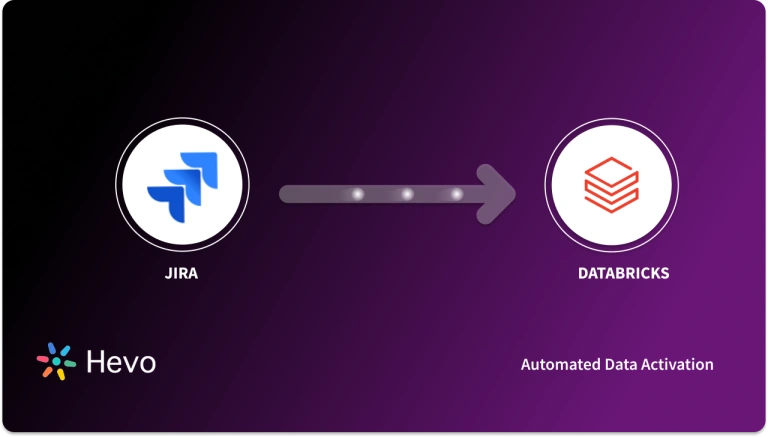Are you facing difficulties with your daily JIRA data exports? Do you find it grueling to perform all the work? Well, look no further! This article will answer all your queries & relieve you of the stress of finding a truly efficient solution. Follow our easy step-by-step solution to help you master the skill of executing a JIRA Export to CSV seamlessly.
It will help you take charge in a hassle-free way without compromising efficiency. This blog aims at making the data export process as smooth as possible.
Upon a complete walkthrough of the content, you will be able to export JIRA issues to CSV format seamlessly. You can then load your data to a data warehouse or any destination of your choice for a fruitful analysis. Through this article, you will get a deep understanding of the tools and techniques & thus, it will help you hone your skills further.
Table of Contents
Prerequisites
This is what you need for this article:
- An active JIRA account.
- Working knowledge of CSV files.
- Working knowledge of Project Management softwares.
Introduction to JIRA
JIRA is a tool developed by Atlassian, an Australian company, for project management, bug tracking, and issue tracking. You can use JIRA to track bugs and issues with your software and mobile apps. It is also a good tool for project management. Your software development team can use it to create user stories, distribute tasks across the software team, and plan sprints.
With JIRA, you can prioritize tasks and discuss your team’s work with complete visibility. It can help you ship your software products faster and more reliably by creating smarter plans for your team and your organization.
Effortlessly connect Jira Cloud and automate your workflows with Hevo! Streamline data sync, gain instant insights, and boost team productivity—no coding, just seamless integration. Get started now! Ensure seamless data migration using features like:
- Seamless integration with your desired data warehouse, such as BigQuery or Redshift.
- Transform and map data easily with drag-and-drop features.
- Real-time data migration from 150+ connectors.
Still not sure? See how Postman, the world’s leading API platform, used Hevo to save 30-40 hours of developer efforts monthly and found a one-stop solution for all its data integration needs.
Get Started with Hevo for FreeIntroduction to CSV Files
Comma Separated Values, or CSV, is a format for storing data that is separated by commas. It’s a simple text file with a list of values in layman terms. Typically, these files are used to transfer data across different applications. Comma Separated Values or Comma Delimited Files are other names for them.
CSV files are compatible with a wide range of spreadsheet software, including Google Spreadsheets and Microsoft Excel. CSV files differ from regular sheets in that they do not allow saving formulas and only allow one sheet per file, with constraints on saving rows, columns, and other data. Complex data is typically extracted from an application, translated to CSV format, and then imported into another application.
Steps to Achieve JIRA Export to CSV
Now that you have a basic grasp of JIRA, let’s try to understand the procedure to achieve JIRA Export to CSV. Below are the steps you can follow to achieve JIRA Export to CSV:
- Step 1: Setting up JIRA
- Step 2: JIRA Export to CSV for Users Data
- Step 3: JIRA Export to CSV for Issues
- Step 4: JIRA Export to CSV for Reports
Step 1: Setting Up JIRA
- To use JIRA. This will open JIRA in your browser.
- Click the dropdown box on the right of “My account”. Choose “Log in”.
- Log into your JIRA account.
- You will be taken to a page that shows some helpful links and the products that they offer.
- Here, you can choose the JIRA product that you need to use.
- Choose “JIRA Software”.
You will be taken to the JIRA Software page.
The upper menu bar shows the products offered by the Atlassian company.
- First on this menu bar is the “Products” tab that shows the various products offered by JIRA.
- There is also the “For teams” tab that shows what teams can do with the software.
- It also has the “Support” tab that you can use to get support on how to use the platform.
- The second or lower menu bar shows tabs for working with the JIRA Software.
- The “Features” tab shows the available features for software development. Examples of these features include scrum boards, Kanban boards, roadmaps, agile reporting, connecting issues to code, etc.
- The “Product guide” tab has everything that you need to know about using, buying, and customizing JIRA software.
- The “Enterprise” tab shows the enterprise cloud plans for JIRA software. You can use these plans to accelerate the innovation of your team at scale.
- The “Pricing” tab shows the various pricing plans for JIRA software. It offers three pricing plans namely Free, Standard, and Premium plans.
You can use the Free plan for free. However, you are required to pay a monthly subscription fee to use the other two plans. These two have free trial periods.
In the next few sections, you’ll be able to learn the process of exporting different types of data, such as the process to export JIRA issues to CSV format.
Step 2: JIRA Export to CSV for Users Data
If you are the organization admin, JIRA allows you to export data for your users in a CSV format. The exported data will show additional information like product access for every user.
Follow the steps given below:
- Open your organization page using this link.
- Click “Directory” from the menu bar and choose “Managed accounts” from the vertical navigation bar shown on the left.
- Click the “Export users” button shown on the top right corner of the screen.
- An email will be sent to you with a link that you can use to download the CSV data for your users. Click that link to download the data.
This is how you can retrieve a user’s data in the CSV format by performing a JIRA Export to CSV.
Step 3: JIRA Export to CSV for Issues
JIRA also allows users to carry out a JIRA Export to CSV for data associated with issues. To do this, follow the steps given below:
- Go to the project or the board that you need to export.
- Click “Issues” from the left side of the page.
- Click “View all issues and filters” from the top of the screen.
- Click the “Export” dropdown from the top right corner of the screen.
- Choose CSV (All fields) as the export format.
This is how you can export JIRA issues to CSV format with ease.
Step 4: JIRA Export to CSV for Reports
It’s possible for you to export the values of scope reports and release reports to CSV files in JIRA. This becomes very useful when you need to explore the report data across different systems.
- Click “Portfolio”, choose “View Portfolio” then select your plan. Your plan will be opened.
- Click “Reports”. This will open the reports section of your plan.
- Select “Releases” or “Scope” from the Switch report menu.
- You can click the settings gear and configure the display settings for the report if necessary.
- Click the “Export” button and choose the location to save your CSV file. The CSV file will be downloaded onto your computer.
This is how you can retrieve JIRA reports in the CSV format by performing a JIRA Export to CSV.


Limitations of JIRA Export to CSV
When working with the JIRA software, you can carry out a JIRA Export to CSV, JSON, and numerous other formats for a diverse set of data associated with your JIRA account. However, you will face the following challenges:
- JIRA’s exports miss important data. For example, export doesn’t include comments, transitions, and attachments. If your goal was to move the data to another system, you will miss out on all that data.
- JIRA only allows you to export a maximum of 1000 issues at a go. This can be a problem for your team especially if they need to export many issues to another system.
- Limited Data Fields: The CSV export may not include all custom fields, comments, or attachments, leading to incomplete data exports.
- No Hierarchical Data: JIRA does not export data in its full hierarchy (e.g., parent-child relationships for issues or subtasks), making it harder to track dependencies.
- No Formatting or Visuals: Exports lack formatting, charts, and visuals, so it may be challenging to interpret the data without additional manual effort.
Conclusion
This article teaches you how to set up JIRA Export to CSV. It gave you a brief overview of JIRA software and CSV files. It also provided you in-depth knowledge about the concepts behind every step to help you export different types of data from JIRA to CSV. Now, you can easily export JIRA to CSV format with ease.
Businesses can use automated platforms like Hevo Data to set the integration and handle the ETL process. It helps you directly transfer data from JIRA for free to a Data Warehouse, Business Intelligence tools, or any other desired destination in a fully automated and secure manner without having to write any code and will provide you a hassle-free experience.
Sign up for a 14-day free trial and experience the feature-rich Hevo suite first hand. You can also have a look at the unbeatable pricing that will help you choose the right plan for your business needs.
Share in the comments below your thoughts on achieving JIRA Export to CSV.
FAQ
How do you export Jira issues to a CSV file?
In Jira, go to the Issues section, apply your filters, and click Export at the top right. Select Export Excel CSV or Export CSV (all fields) to download your issues.
What data is included when exporting Jira to CSV?
The export includes issue keys, summaries, statuses, assignees, created dates, and any custom fields, depending on your selected export type.
Can you customize the fields exported to CSV from Jira?
Yes, you can customize the fields by modifying the columns in your issue navigator before exporting. Only the visible fields will be included in the CSV export.









